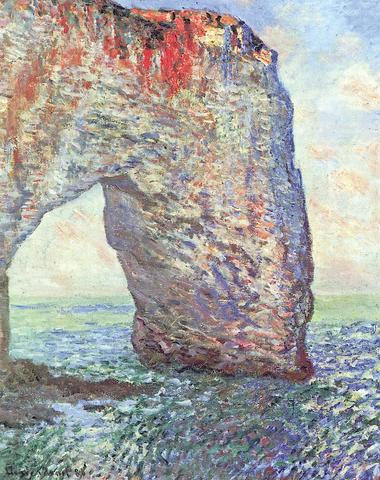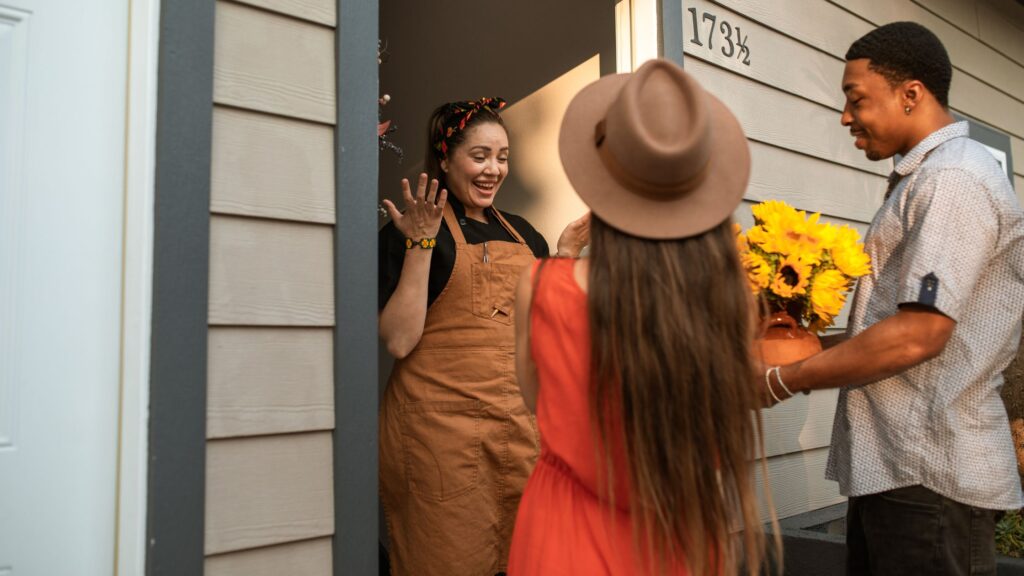 On a recent trip for a TeamRCIA institute, Diana and I took time to visit the Metropolitan Museum of Art in New York City. As I stood contemplating a 19th century Impressionist work, two young women dashed in front of me, snapped a picture of the paining, and hurried away as quickly as they’d arrived.
On a recent trip for a TeamRCIA institute, Diana and I took time to visit the Metropolitan Museum of Art in New York City. As I stood contemplating a 19th century Impressionist work, two young women dashed in front of me, snapped a picture of the paining, and hurried away as quickly as they’d arrived.
The painting I was looking at was The Manneporte near Etretat by Claude Monet. Monet, when he went out to paint on that beach, would take five or six canvases, each with a partially completed painting of the same view. As the sun moved across the sky and shadows lengthened or clouds formed, the artist would put down one canvas and take up another to capture the changing nature of the scene. Monet produced 20 different works depicting that beach, including six of the dramatic cliff-arch at Etretat. If, as Pope John Paul II said, God is revealed in beauty, Monet had a gusher of holiness to reveal through his brush on the Etretat beach.
Are we letting our seekers miss important moments?
Which makes me sad for the two young snapshooters I encountered. They reminded me of the foolish young women in the gospel who, having come to the wedding feast unprepared, rushed off and missed the Bridegroom. I stood in front of Monet’s painting for some time, wondering what he had seen that day that compelled him to paint the cliff the way he did. What was he saying to me, asking me to notice, trying to reveal?
Also showing at the Met that day was Heavenly Bodies: The Catholic Imagination. The exhibit was a collection of designer gowns and jewelry displayed among the religious vestments that inspired them. And the exhibit included a collection papal vestments appearing for the first time outside of Vatican City. The description of the exhibition included this quote from sociologist and Chicago priest Andrew Greeley:
Catholics live in an enchanted world, a world of statues and holy water, stained glass and votive candles, saints and religious medals, rosary beads and holy pictures. But these Catholic paraphernalia are mere hints of a deeper and more pervasive religious sensibility that inclines Catholics to see the Holy lurking in creation.
I wonder if we are doing enough to imbue our RCIA seekers with this sacramental imagination, which Greeley identifies as particularly Catholic. Are we teaching our seekers how to see the Holy One who is revealed in a long, loving look at the beauty that surrounds us? Is imagination-training a core component of our catechumenate formation processes?
How the RCIA nudges us toward an encounter with God
The Rite of Christian Initiation of Adults says that we have to provide a “suitable catechesis,” one that gives seekers an “appropriate acquaintance with dogmas and precepts,” and also “a profound sense of the mystery of salvation” (75.1).
Think of the person you love most in the world. Think of how — for all these years — you have been discovering the profound mystery of who that person is. The more you gaze upon your beloved, the longer you contemplate the depth of that person, the more you see how much more there is to still be revealed. Contrast that with those people in your life who were merely snapshots. You dashed into their lives and hurried away without ever knowing them.
If we are going to lead our seekers on a journey of discipleship, we have to give them more than a snapshot of Jesus. We have to teach them how to contemplate the mystery of salvation, which they will discover lurking in everyone and everything around us.
Your Turn
What have your seekers found most awe-inspiring in their faith journey? How are you equipping them with the language to describe what they are experiencing? Share your thoughts in the comments below.


















Thank you for this resource concerning the Mass! In a few weeks I’ll be sharing with our RCIA some brief thoughts about the Mass and this resource will provide lots of opportunity for discussion as well as giving concrete suggestions about thriving during Mass rather than just surviving the hour.
Our RCIA has benefitted so much from your teaching and guidance over the years and we are very grateful for your faithfulness in following the calling of our Lord in this way.
Blessings,
Lynda
Thank you for this reflection because as a Ceramic artist creating hospital installations as part of the being process, I found your words especially meaningful and reassuring.
Thank you-you gave me a quote from Fr. Greeley that I can forward to our team members and RCIA candidates. These everyday reminders keep us constantly in touch with the Holy everyday-not just on Sundays. Catholics have an inside track to staying in touch with the Lord…this is one important facet!
A few years ago I picked up some very helpful information about teaching a roomful (or a table full) of people. Everyone learns differently, and unless the teacher includes something for everyone, you will not be able to engage everyone.
If you don’t already know about “multiple intelligences” you can get very good information on the web. Basically the theory identifies the following as the basic learning styles: Visual-Spatial (eyes and “geography” of the space), Bodily-kinesthetic (touch & movement), Musical (obviously some form of music — recorded, sung, etc), Interpersonal (talking to other people), Intrapersonal (meditation/pondering quietly), Linguistic (words & occasional reference to meanings in the language of scripture, etc), and Logical (figuring things out, connections). More values have been added to the original list . By now this process is second nature to me, and it would be a very useful tool for whoever plans catechetical sessions. My #1 go-to question is always, “What image captures the core of the scripture text,” You will have one that’s personal to you. Have fun with it.